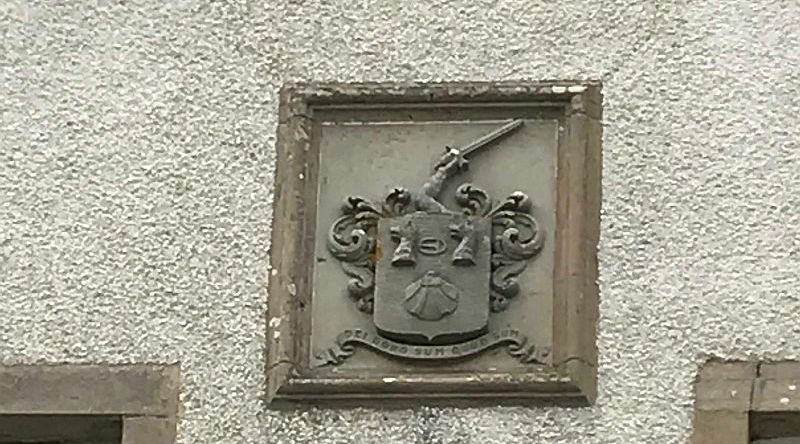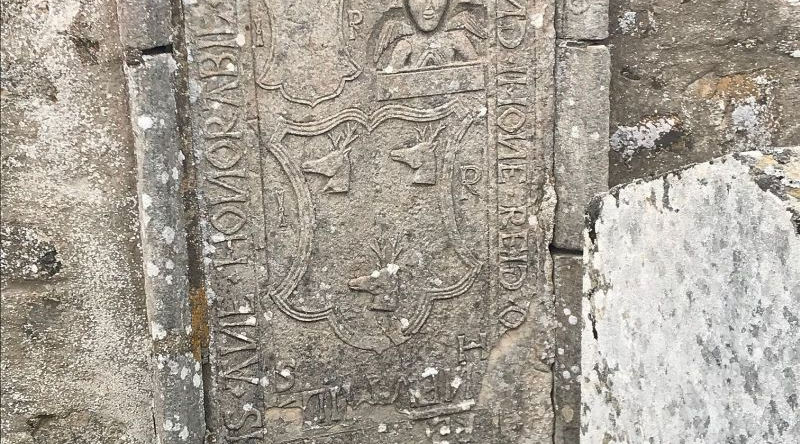LUMSDEN CLAN GATHERINGS
Dear Member,
House of Lumsden Clan Gathering 2023
I am sorry to have to advise you that we have to date received only a small number of replies to the Autumn bulletin, and subsequent emails, asking members to indicate whether or not they were able to attend our proposed House of Lumsden Gathering in August.
As the Stirling Court Hotel now require a firm confirmation of our booking, we have reluctantly taken the decision to cancel the Gathering for this year.
I am grateful to Cren and Diana for their excellent work in arranging the programme of events on our behalf and I am sorry this has come to nothing, but we are hoping the Gathering may be held next year in somewhat more favourable circumstances.
Yours sincerely,
Gillem Lumsden
postponement of the 2023 Lumsden Clan Gathering in Stirling.
A letter from the Chief of the Lumsden Clan,
Gillem Lumsden of that Ilk and Blanerne

Things To Do In Stirling

Stirling Castle
Stirling Castle, located in Stirling, is one of the largest and most important castles in Scotland, both historically and architecturally. The castle sits atop Castle Hill, an intrusive crag, which forms part of the Stirling Sill geological formation. It is surrounded on three sides by steep cliffs, giving it a strong defensive position. Its strategic location, guarding what was, until the 1890s, the farthest downstream crossing of the River Forth, has made it an important fortification in the region from the earliest times.
Most of the principal buildings of the castle date from the fifteenth and sixteenth centuries. A few structures remain from the fourteenth century, while the outer defences fronting the town date from the early eighteenth century. Before the union with England, Stirling Castle was also one of the most used of the many Scottish royal residences, very much a palace as well as a fortress. Several Scottish Kings and Queens have been crowned at Stirling, including Mary, Queen of Scots, in 1542, and others were born or died there.
Public Domain, https://commons.wikimedia.org/w/index.php?curid=1421229

Doune Castle
Doune Castle is a medieval stronghold near the village of Doune, in the Stirling council area of central Scotland and the historic county of Perthshire. The castle is sited on a wooded bend where the Ardoch Burn flows into the River Teith. It lies 8 miles northwest of Stirling, where the Teith flows into the River Forth. Upstream, 8 miles further northwest, the town of Callander lies at the edge of the Trossachs, on the fringe of the Scottish Highlands.
Recent research has shown that Doune Castle was originally built in the thirteenth century, then probably damaged in the Scottish Wars of Independence, before being rebuilt in its present form in the late 14th century by Robert Stewart, Duke of Albany, the son of King Robert II of Scots, and Regent of Scotland from 1388 until his death. Duke Robert's stronghold has survived relatively unchanged and complete, and the whole castle was traditionally thought of as the result of a single period of construction at this time. The castle passed to the crown in 1425, when Albany's son was executed, and was used as a royal hunting lodge and dower house. In the later 16th century, Doune became the property of the Earls of Moray.

The National Wallace Monument is a 67 metre tower on the shoulder of the Abbey Craig, a hilltop overlooking Stirling in Scotland. It commemorates Sir William Wallace, a 13th- and 14th-century Scottish hero. The tower is open to the public for an admission fee. Visitors approach by foot from the base of the crag on which it stands. On entry there are 246 steps to the final observation platform, with three exhibition rooms within the body of the tower. The tower is not accessible to disabled visitors.
Wallace Monument

Church of Holy Rude
The Church of the Holy Rude is the medieval parish church of Stirling, Scotland. It is named after the Holy Rood, a relic of the True Cross on which Jesus was crucified. The church was founded in 1129 during the reign of David I, but the earliest part of the present church dates from the 15th century. As such it is the second oldest building in Stirling after Stirling Castle, parts of which date from the later 14th century. The chancel and tower were added in the 16th century. Stirling Castle has long been a favoured residence of the Scottish monarchs, and was developed as a Renaissance palace during the reigns of the later Stewart kings. The Church of the Holy Rude, adjacent to the castle, became similarly associated with the Scottish monarchy, hosting royal baptisms and coronations. It is one of three churches still in use in Britain that have been the sites of coronations.
The Stirling Smith Art Gallery & Museum
The Stirling Smith Art Gallery and Museum – formerly The Smith Institute – has played a very special part in the history of Stirling since its foundation in 1874. Established by the bequest of artist Thomas Stuart Smith (1815-1869) on land supplied by the Burgh of Stirling, it is an historic public-private partnership which has continued to the present day.
It was founded as a gallery of mainly contemporary art, with museum and library reading room ‘for the benefit of the inhabitants of Stirling, Dunblane and Kinbuck’.
Wed - Sun: 10:00 - 17:00
By Otter - Own work, CC BY-SA 3.0, https://commons.wikimedia.org/w/index.php?curid=30276277

Loch Lomond

Wikipedia
Loch Lomond (/ˈlɒx ˈloʊmənd/; Scottish Gaelic: Loch Laomainn - 'Lake of the Elms'[6]) is a freshwater Scottish loch which crosses the Highland Boundary Fault, often considered the boundary between the lowlands of Central Scotland and the Highlands.[1] Traditionally forming part of the boundary between the counties of Stirlingshire and Dunbartonshire, Loch Lomond is split between the council areas of Stirling, Argyll and Bute and West Dunbartonshire. Its southern shores are about 23 kilometres (14 mi) northwest of the centre of Glasgow, Scotland's largest city.[2] The Loch forms part of the Loch Lomond and The Trossachs National Park which was established in 2002.
Loch Lomond is 36.4 kilometres (22.6 mi) long[1] and between 1 and 8 kilometres (0.62–4.97 mi) wide,[2] with a surface area of 71 km2 (27.5 sq mi).[1] It is the largest lake in Great Britain by surface area;[7] in the United Kingdom, it is surpassed only by Lough Neagh and Lough Erne in Northern Ireland.[8] In the British Isles as a whole there are several larger loughs in the Republic of Ireland. The loch has a maximum depth of about 190 metres (620 ft) in the deeper northern portion, although the southern part of the loch rarely exceeds 30 metres (98 ft) in depth.[3] The total volume of Loch Lomond is 2.6 km3 (0.62 cu mi), making it the second largest lake in Great Britain, after Loch Ness, by water volume.[9]
The loch contains many islands, including Inchmurrin, the largest fresh-water island in the British Isles.[10] Loch Lomond is a popular leisure destination and is featured in the song "The Bonnie Banks o' Loch Lomond". The loch is surrounded by hills,[11] including Ben Lomond on the eastern shore, which is 974 metres (3,196 ft) in height[2] and the most southerly of the Scottish Munro peaks. A 2005 poll of Radio Times readers voted Loch Lomond as the sixth greatest natural wonder in Britain.[12]


LUMSDEN CLAN GATHERINGS

2018 Gathering at Lumsden, Aberdeenshire



2015 Gathering at Kelso, Borders
Fifty-three members of the Association and their guests assembled at the Ednam House Hotel, Kelso for the 2015 Lumsden Gathering.
For the Gathering the hotel had given us a room opening on to the lawn and gardens above the River Tweed and with a piper playing outside, members made use of this and the good weather to take in the view of the river and the Kelso Bridge.



2012 Lumsden Gathering
St Andrews University, Fife
2009 Lumsden Gathering
Huntingtower, Perthshire

The International Gathering of the Clans Edinburgh 2009
The Gathering 2009 was a two-day weekend event, celebrating Scottish culture, held between 25–26 July 2009, as part of Homecoming 2009.
The event was held at Holyrood Park, Scotland, and attracted around 47,000 people from all over the world. Over 125 Scottish clans were represented in what was described as the largest Highland Games in Scotland's history. A clan convention also took place, also the largest recorded meeting of chiefs.

On Saturday 25th, 2009, 15 Lumsdens and friends boarded a bus at the Huntingtower Hotel, on the outskirts of Perth and headed to Edinburgh to attend the Homecoming Highland Games and Clan Gathering.
At the tent in the Clan area, which we shared with the Tribe of Mar, we met up with many other members who had made their separate way there. The weather was glorious and a better setting, between the Palace of Holyrood and Arthur’s Seat, could not have been found. Business at the tent was brisk and Gillem, his sons, Cren and Jas, together with Sonagh, Lucy and Archie took turns to talk to friends and vistors.
2009 The Homecoming Highland Games, Edinburgh
This was probably the largest Highland Games and Clan Gathering held in Scotland and it is estimated that over 47,000 people from 40 countries attended over the two days. Pipers and dancers, live music, food and drink and the most vivid array of tartan, worn in all manners, contributed to the colour.
Although the bus set off back to Perth in the evening, a hardy collection of folk took place behind their Chief to march in the huge procession up the Royal Mile and attended the pageant at the castle.
Click here to see a great selection of photogrpahs of the 2009 International Clan Gathering.
The Lumsden Clan, led by our Chief Gillem alongside his sons Jas and Cren.
See at 1 minute 54 seconds

2006 Lumsden Gathering
University of Aberdeen, Aberdeen
2003 Lumsden Gathering
Luffness Castle,
East Lothian




























































